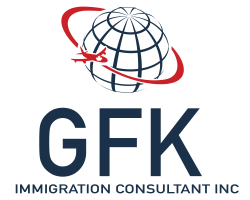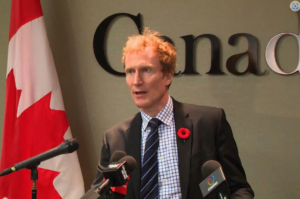Powered by  Translate
Translate
New Canada Immigration Levels Plan: 2025-2027. Today, the minister of Immigration, Refugees, and Citizenship Canada (IRCC), announces the new immigration levels plan 2025-2027.
This article lists all the official category-wise new permanent resident and temporary resident targets.
Official announcement by Canadian Prime Minister Justin Trudeau and Immigration Minister Marc Miller:
Table of Contents
Permanent resident targets
Permanent resident targets focus on measures from the 2025-2027 Immigration Levels Plan, including the following:
Transitioning more temporary residents who are already in Canada as students and workers to permanent residents
Representing more than 40% of overall permanent resident admissions in 2025, these residents are skilled, educated and integrated into Canadian society.
They will continue to support the workforce and economy without placing additional demands on our social services because they are already established with housing and employment.
Focusing on long-term economic growth and key labour market sectors, such as health and trades
Permanent resident admissions in the economic class will reach 61.7% of total admissions by 2027.
Strengthening Francophone communities outside Quebec and supporting their economic prosperity
educated
Of the overall permanent resident admission targets, Francophone immigration will represent 8.5% in 2025 and 9.5% in 2026.
New Canada Immigration Levels Plan: 2025-2027.
| 2025 | 2026 | 2027 | ||||||||
|---|---|---|---|---|---|---|---|---|---|---|
| Immigrant Category | Target | Low Range | High Range | Target | Low Range | High Range | Target | Low Range | High Range | |
| Overall Planned Permanent Resident Admissions | 395,000 (367,000 – 436,000) |
380,000 (352,000 – 416,000) |
365,000 (338,000 – 401,000) |
|||||||
| Overall French-speaking Permanent Resident Admissions outside Quebec | 8.5% (29,325) |
9.5% (31,350) |
10% (31,500) |
|||||||
| Economic | Federal Economic Priorities | 41,700 | 30,000 | 62,000 | 47,400 | 30,000 | 65,000 | 47,800 | 32,000 | 65,000 |
| In-Canada Focus | 82,980 | 39,000 | 89,000 | 75,830 | 33,000 | 82,000 | 70,930 | 66,000 | 76,000 | |
| Federal Business | 2,000 | 1,200 | 3,000 | 1,000 | 200 | 2,000 | 1,000 | 200 | 2,000 | |
| Federal Economic Pilots: Caregivers ; Agri-Food; Community Immigration Pilots ; Economic Mobility Pathways Pilot |
10,920 | 6,000 | 14,800 | 9,920 | 5,300 | 14,000 | 9,920 | 5,300 | 14,000 | |
| Atlantic Immigration Program | 5,000 | 4,000 | 7,000 | 5,000 | 4,000 | 7,000 | 5,000 | 4,000 | 7,000 | |
| Provincial Nominee Program | 55,000 | 20,000 | 65,000 | 55,000 | 20,000 | 65,000 | 55,000 | 20,000 | 65,000 | |
| Quebec Skilled Workers and Business | 34,500 | 33,000 | 50,000 | TBD | – | – | TBD | – | – | |
| Regularization Public Policy | 50 | – | 250 | 100 | – | 500 | 200 | – | 1,000 | |
| Total Economic | 232,150 (215,000 – 256,000) |
229,750 (214,000 – 249,000) |
225,350 (207,000 – 246,000) |
|||||||
| Family | Spouses, Partners and Children | 70,000 | 65,500 | 78,000 | 66,500 | 63,000 | 75,000 | 61,000 | 58,000 | 67,500 |
| Parents and Grandparents | 24,500 | 20,500 | 28,000 | 21,500 | 16,500 | 24,500 | 20,000 | 15,000 | 22,000 | |
| Total Family | 94,500 (88,500 – 102,000) |
88,000 (82,000 – 96,000) |
81,000 (77,000 – 89,000) |
|||||||
| Refugees and Protected Persons | Protected Persons in Canada and Dependents Abroad | 20,000 | 18,000 | 30,000 | 18,000 | 16,000 | 30,000 | 18,000 | 16,000 | 30,000 |
| Resettled Refugees – Government Assisted | 15,250 | 13,000 | 17,000 | 15,250 | 13,000 | 17,000 | 15,250 | 13,000 | 17,000 | |
| Resettled Refugees – Blended Visa Office Referred | 100 | – | 150 | 100 | – | 150 | 100 | – | 150 | |
| Resettled Refugees – Privately Sponsored | 23,000 | 21,000 | 26,000 | 22,000 | 19,000 | 24,000 | 21,000 | 19,000 | 24,000 | |
| Total Refugees and Protected Persons | 58,350 (55,000 – 65,000) |
55,350 (50,000 – 62,000) |
54,350 (50,000 – 60,000) |
|||||||
| Total Humanitarian & Compassionate and Other | 10,000 (8,500 – 13,000) |
6,900 (6,000 – 9,000) |
4,300 (4,000 – 6,000) |
|||||||
Below are the temporary resident targets introduced for the first time ever in Canadian history.
Temporary resident targets
TR targets will capture the number of new workers and students arriving in Canada:
- Student arrivals are aligned with the previously announced
- Worker arrivals are those under the International Mobility Program and the Temporary Foreign Worker Program (TFWP).
As such, categories excluded from the TR targets but included in the stock of TRs are:
- Work or study permit extensions or change of status from within Canada (since we would be counting an individual’s status more than once). This is factored into the outflows.
- Seasonal workers who enter and leave Canada within the same year (since they aren’t a part of our year-end population count).
- Asylum claimants who are seeking protection in Canada (since they are entitled by law to have their claim assessed so we can’t control the volumes like we do with other programs).
| 2025 | 2026 | 2027 | |
|---|---|---|---|
| Overall Arrival | 673,650 (604,900 – 742,400) |
516,600 (435,250 – 597,950) |
543,600 (472,900 – 614,250) |
| Workers (Total) | 367,750 | 210,700 | 237,700 |
| International Mobility Program | 285,750 | 128,700 | 155,700 |
| Temporary Foreign Worker Program | 82,000 | 82,000 | 82,000 |
| Students | 305,900 | 305,900 | 305,900 |
Taken together, the targets are expected to result in a net decrease in temporary residents over the next two years. Specifically, compared to each previous year, we will see:
- 445,901 fewer TRs in 2025
- 445,662 fewer TRs in 2026
- a modest increase of 17,439 TRs in 2027
What’s unique about Canada’s immigration levels plan 2025-2027?
The immigration levels plan outlines the number of new foreigners inside or outside Canada who will be granted permanent resident status annually over the next 3 years under various categories.
Usually, these are announced on November 1st of every year, but this time immigration targets are being announced a week ahead.
Additionally, it will be the first time in Canadian history that annual targets for the number of temporary residents will also be announced.
In 2023, the country had about 2,500,000 temporary residents, accounting for 6.2% of the total population.
Miller says the forthcoming Plan would aim to reduce the number of temporary immigrants admitted in the future years, bringing the figure down to 5% within the next three years.
Spoiler Alert By News Outlets
Leading Canadian news media outlets already published the new immigration levels plan 2025-2027, citing that an internal source already supplied credible information.
While it was already expected that Canada would slash down the immigration targets, anonymous sources released the information that there would be a around 21% reduction in annual immigration levels.
90,000 fewer permanent residents will be allowed to enter in 2025 with an annual target of 395,000 as compared to the 2024 annual target, followed by 380,000 in 2026 and 365,000 in 2027.
The immigration levels plan is important for the upcoming year, that is, 2025, since these plans are reviewed annually on or before November 1 every year.
| Immigration Category | 2025 Target | 2026 Target | 2027 Target |
|---|---|---|---|
| Total Permanent Residents | 395,000 | 380,000 | 365,000 |
What were the previous immigration levels plan 2024-2026?
Previously, IRCC aimed at welcoming 485,000 new permanent residents in 2024 and then stabilizing them at 500,000 annually in 2025 and 2026.
| Year | 2024 | 2025 | 2026 | |||
| Total Projected admissions Targets and Ranges | 485,000 | 500,000 | 500,000 | |||
| Low | High | Low | High | Low | High | |
| 430,000 | 532,500 | 442,500 | 550,000 | 442,500 | 550,000 | |
| Economic immigration | 281,135 | 301,250 | 301,250 | |||
| 250,000 | 305,000 | 265,000 | 326,000 | 265,000 | 326,000 | |
| Family reunification | 114,000 | 118,000 | 118,000 | |||
| 105,000 | 130,000 | 107,000 | 135,000 | 107,000 | 135,000 | |
| Refugees, protected persons, humanitarian and compassionate, and other | 89,865 | 80,750 | 80,750 | |||
| 75,000 | 110,500 | 70,500 | 92,000 | 70,500 | 92,000 | |
Gboyega Esan RCIC R708591
Phone: +1 (647) 225-0092
#foreignworkers #wages #Indiams #Racism #PR #StudyPermit #CanadaImmigration #PostGraduateOpportunities #GFKImmigration #StayInCanada #Express #ExpressEntry #draws #Immigration

